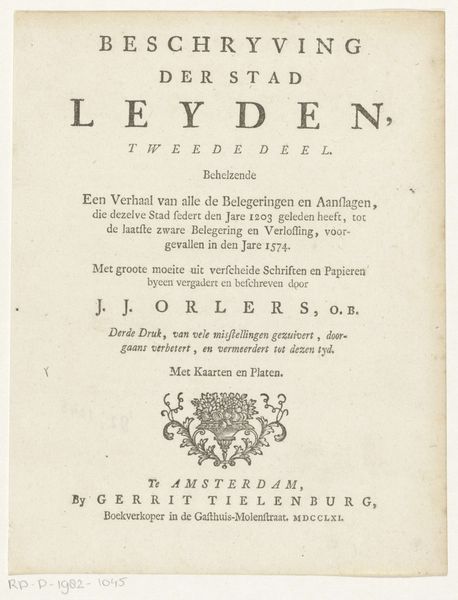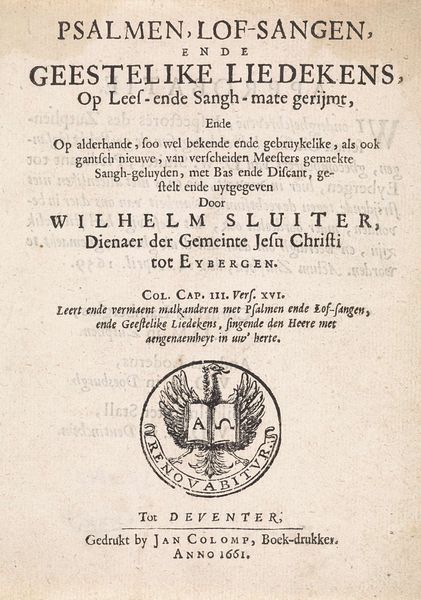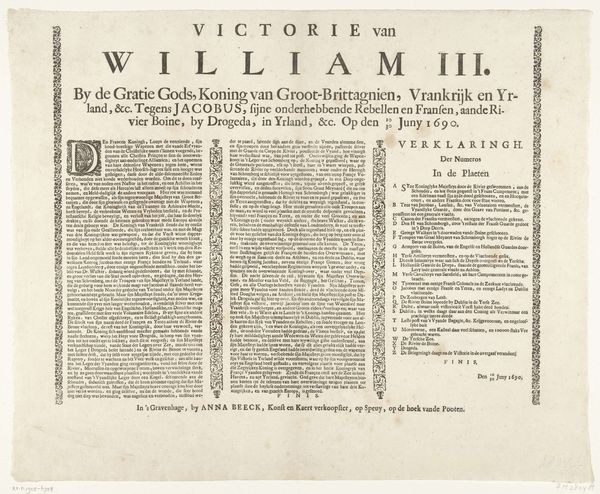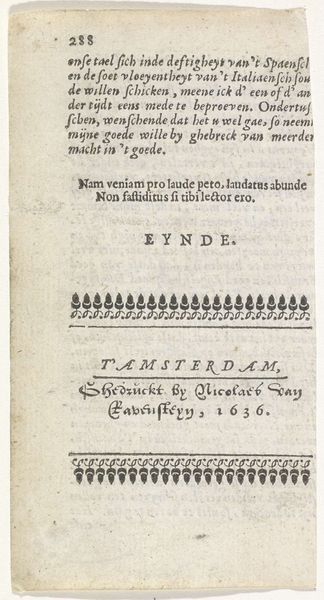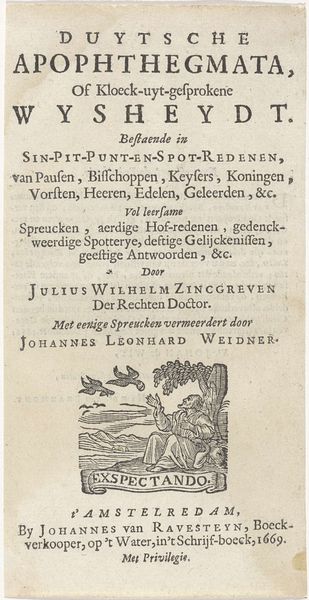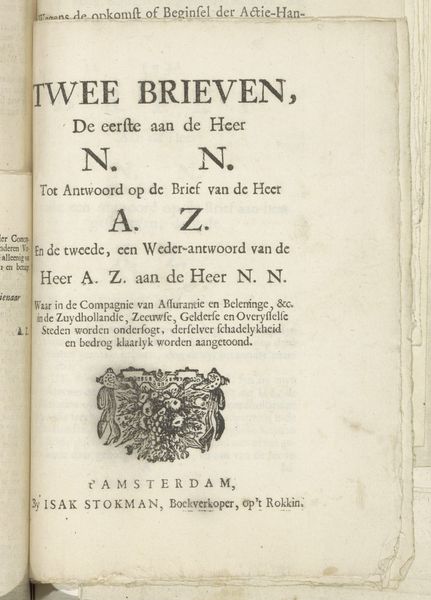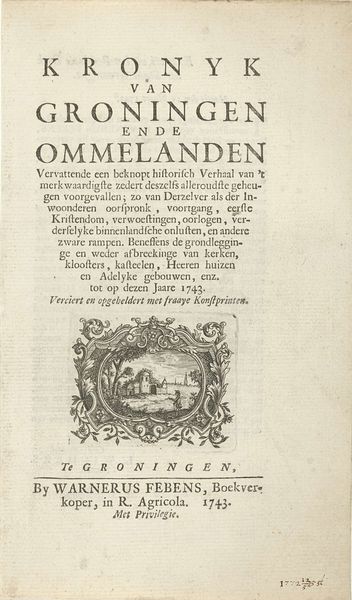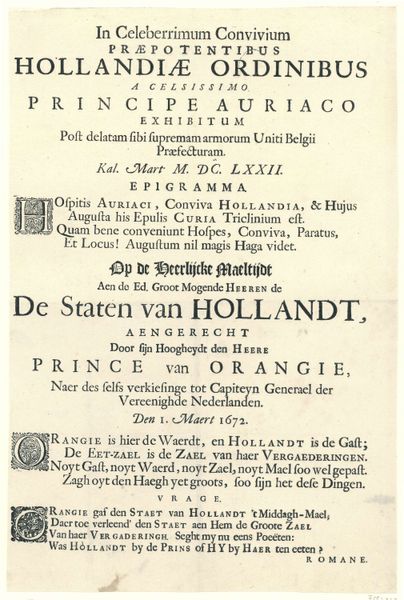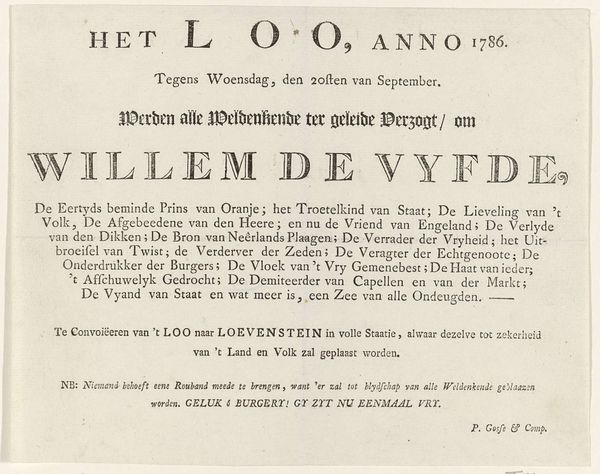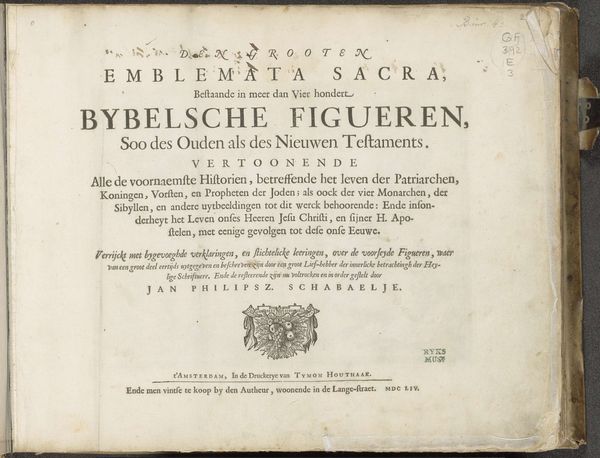
Vers ter ere van de verjaardag van Willem V, prins van Oranje-Nassau, en Carolina, prinses van Oranje-Nassau 1758
0:00
0:00
print, typography
#
portrait
#
baroque
#
dutch-golden-age
# print
#
typography
Dimensions: height 589 mm, width 468 mm
Copyright: Rijks Museum: Open Domain
Curator: This somber typography piece is a verse in honor of the birthday of Willem V, Prince of Orange-Nassau, and Carolina, Princess of Orange-Nassau. Izaak Bilderdijk created it in 1758. Editor: My first thought is how delicate it looks. The paper seems so fragile. There’s also something profoundly unsettling about celebratory verses amidst what appears to be an era of upheaval based on its message. Curator: Absolutely. Considering Bilderdijk was a known conservative figure during a period of immense social and political change, we see that reflected in his work. The print commemorates royalty. The poem thanks them and shows the common belief for those with conservative values in those days. Editor: It's fascinating to think about how typography, usually associated with disseminating radical ideas, could also be used to reinforce established power structures. The verses themselves seem to warn against losing their “VORST’LYK BLOED”, as they call it. Almost a lament, in its own way, against what seems like inevitable societal change. The work speaks volumes about how privilege feels. Curator: It's also worth looking at the use of the Dutch language and script here. It projects Dutch national pride and is aimed at reinforcing cultural identity in a rapidly changing world. As with much art, it reflects the specific historical moment, and offers insight into how societal transformations impacted expressions of art at the time. Editor: So it becomes less about simple commemoration, and more about safeguarding the interests of an elite class during turbulent times? By immortalizing that struggle through verse, and printing said verse onto an official document. Curator: Exactly. Examining works such as these lets us unpack power, tradition, and the lived realities of the elite at pivotal junctures in history, as it tries desperately to make the argument to a rapidly democratizing people. Editor: I came expecting celebration, but instead I found elegy—or, at best, self-preservation dressed up as celebration. Intriguing.
Comments
No comments
Be the first to comment and join the conversation on the ultimate creative platform.

